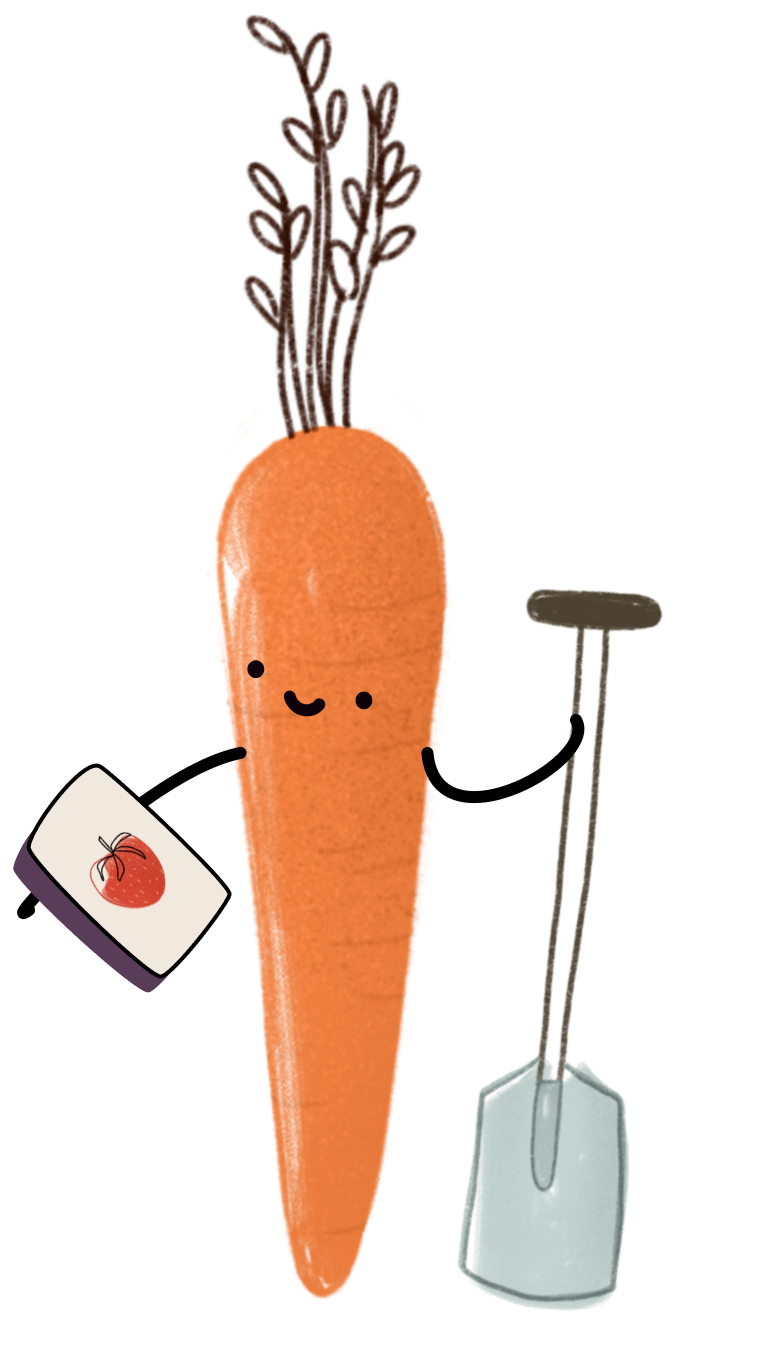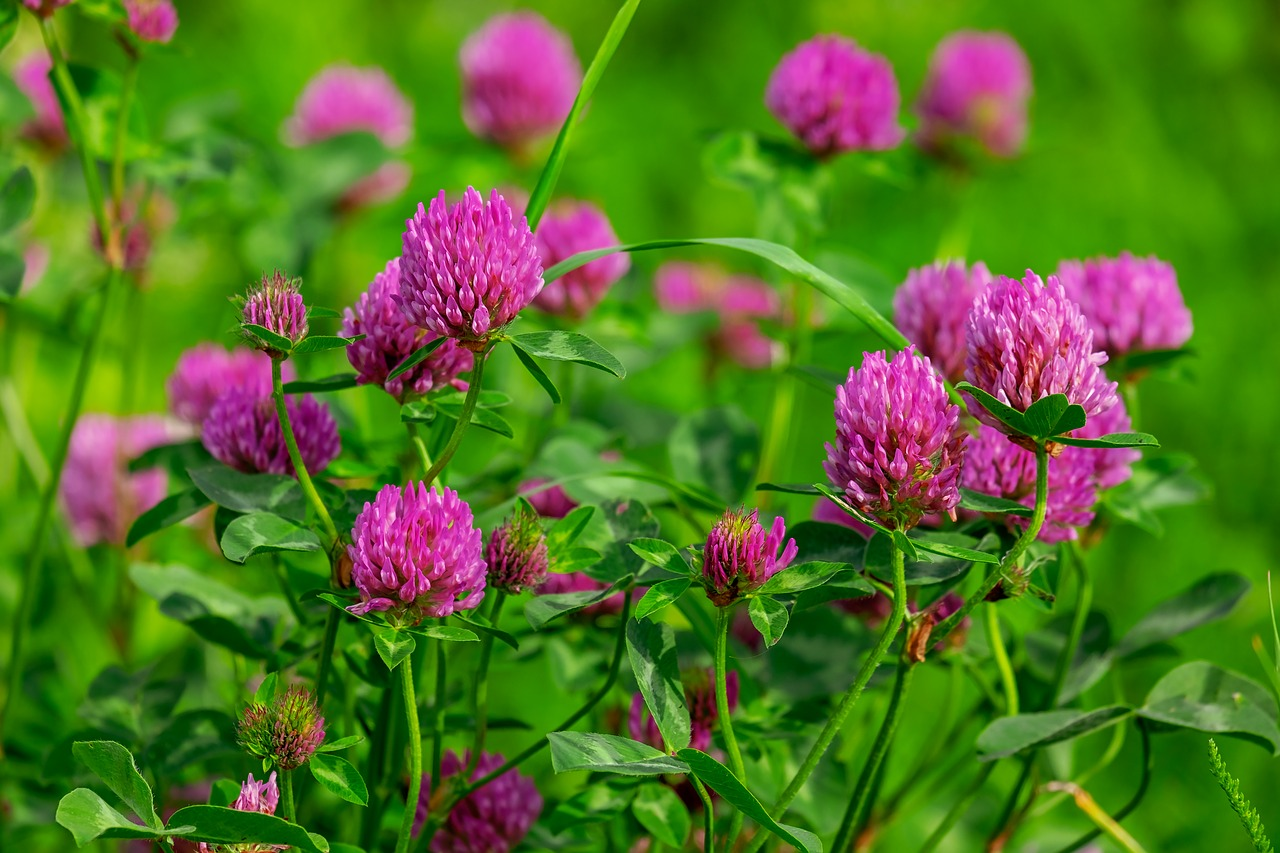
Advantages and Uses of Green Manure: What Plants & More Tips
Green manure is used as a secondary crop in the garden and is usually not harvested but worked into the soil. It contributes to humus enrichment and also has many other benefits for your vegetable garden. You can find out which plants are suitable as green manure and how best to use them in this article.
This Article Contains:
- What Is Green Manure?
- Advantages of Green Manure
- Which Plants Are Suitable for Green Manure?
- Butterfly Plants (Fabaceae) as Green Manure
- Green Manure With Composite Plants (Asteraceae)
- Brassicaceae as Green Manure
- Other Plants for Green Manure
- Sowing Green Manure: Spring to Fall
- Cutting and Incorporating Green Manure
- Green Manure as a Mixed Crop
- Your Planting Plan With Manure Plants: Ideas and Examples
- PDF: Overview for Green Manure Plants
- Frequently Asked Questions About Green Manure
Quick Overview
Advantages of Green Manure
- Deep soil loosening, even in compacted soils
- Suppresses weeds through extensive growth
- Stabilizes the soil surface and protects it from silting and erosion
- Shadowy soil ensures a balanced soil climate
- Enrichment of organic matter and humus
- Improves water retention in the soil
- Legumes accumulate nitrogen in the soil
- Flowering plants attract pollinators
Green Manure: Suitable Plants
- Butterfly plants: yellow lupin, incarnate clover, red clover, seed asparagus, seed vetch
- Compositae: marigold, marigold and sunflower
- Cruciferous: oil radish, white mustard, winter oilseed rape
- Others: bee friend, buckwheat, lamb's lettuce, wild mallow, winter rye
What Is Green Manure?
Green manure refers to plants that are sown to improve the soil. The term is somewhat misleading, as the actual fertilization mainly relates to legumes. These are able to enter into a symbiosis with nitrogen-fixing bacteria, the so-called nodule bacteria. The nodule bacteria convert atmospheric nitrogen into plant-available nitrate and thus supply their plant symbiosis partners. If the plants are later cut and worked into the soil, the nitrogen content of the soil can be enriched in a natural way. However, plants from other families also count as green manures. The decisive factor here is the effect of the plants on the soil structure.
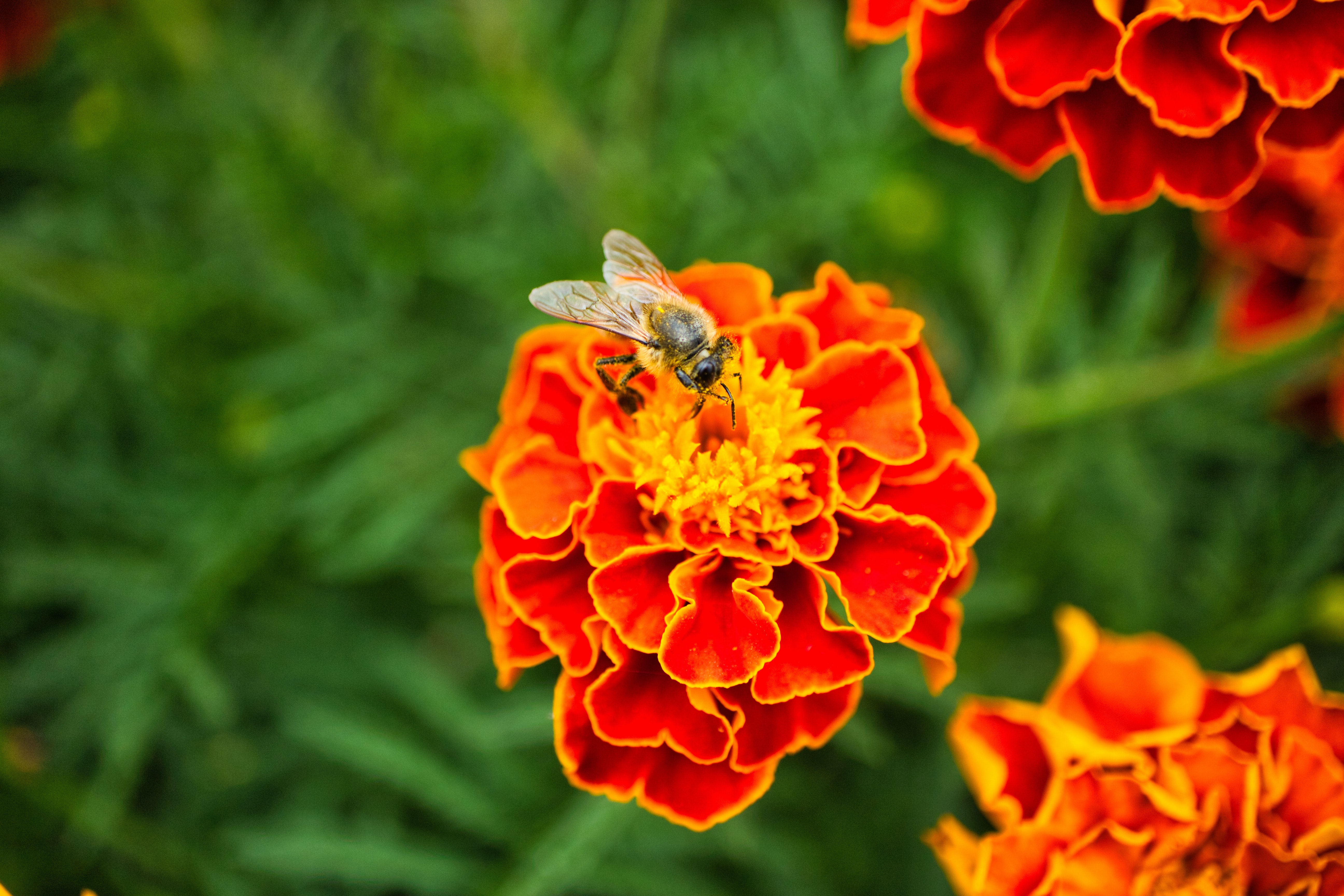
Advantages of Green Manure
Green manuring has many benefits for your vegetable garden, here you can find out the most important ones at a glance:
- Deep soil loosening, even in compacted soils.
- The full coverage of vegetation suppresses weeds and protects the soil from silting and erosion.
- The closed plant cover strengthens the soil surface and shades it at the same time. This helps to maintain a loose, finely crumbly soil structure and to create a balanced soil climate (shading).
- The cut green manure then serves as a mulch layer and thus contributes to the accumulation of organic matter. Soil life is activated and humus is built up.
- The accumulation of humus improves water retention in the soil.
- The loosening of the soil by plant roots ensures better drainage, which prevents waterlogging and improves soil aeration.
- Legumes accumulate nitrogen in the soil through their symbiosis with nodule bacteria.
- Flowering plants such as phacelia or buckwheat attract bees and other nectar-collecting insects. They thus promote the pollination of fruit trees and other plants in the garden.
- Special green manure plants contribute to soil health. Tagetes and marigolds, for example, repel nematodes (threadworms).
Which Plants Are Suitable for Green Manure?
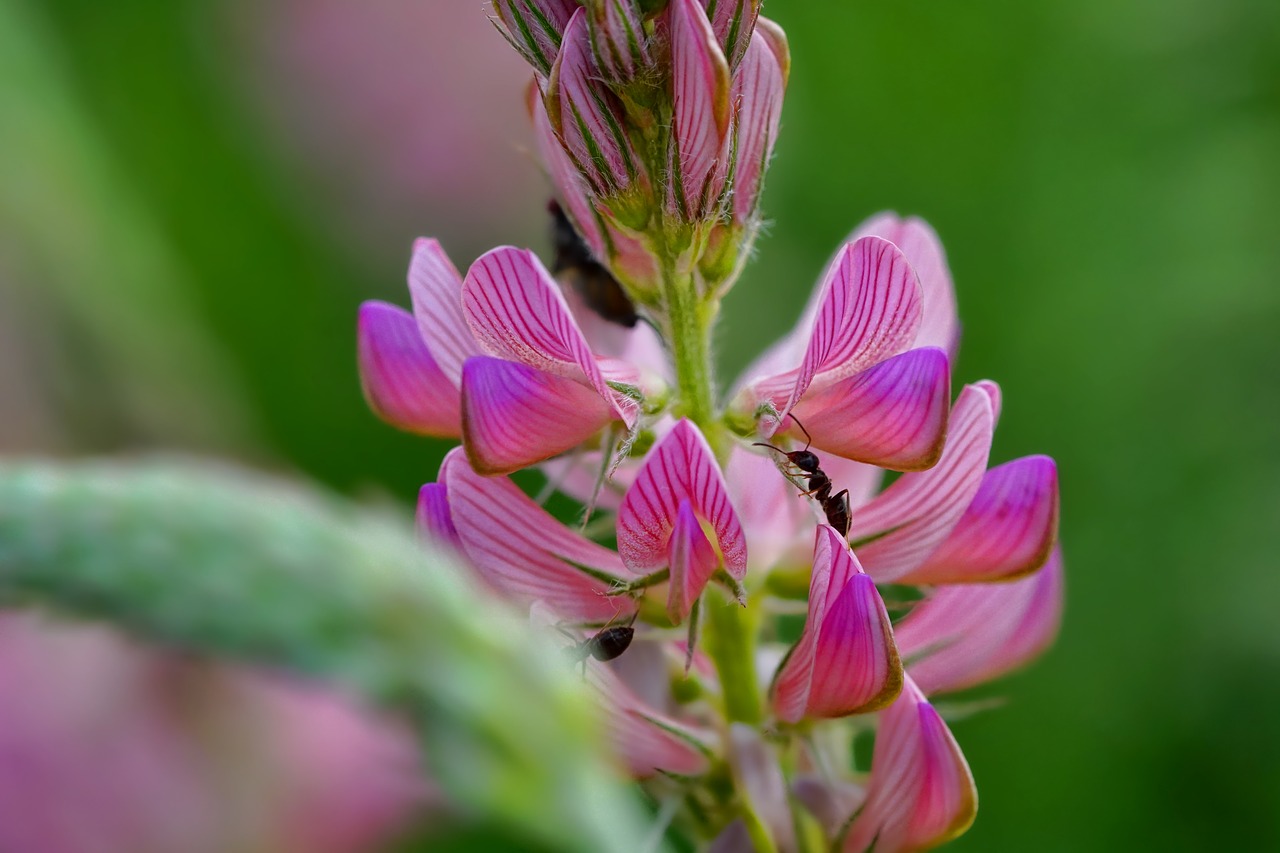
Butterfly Plants (Fabaceae) as Green Manure
Butterfly plants, also known as legumes, accumulate nitrogen in the soil through their symbiotic relationship. They are therefore very suitable as a pre-crop before heavy feeders such as cabbage. As there are also popular vegetable plants within the family (e.g. peas and beans), attention should be paid to healthy succession cropping.
| Plant | Sowing | Root depth | Hardy | Other |
|---|---|---|---|---|
| Lupinus luteus | April - August | taproot up to 1.2 m/1.3 yd deep | not hardy | Attention! Only sow annual lupine species. Perennial lupins are considered invasive! |
| Trifolium incarnation | May - August | up to 1.2 m/1.3 yd deep | hardy | Good weed suppression |
| Trifolium pratense | March - October | taproot up to 0.6 m/0.7 yd deep | hardy | |
| Onobrychis viciifolia | April - Mid-August | taproot up to 4 m/4.4 yd deep | hardy | High drought tolerance |
| Vicia sativa | May - August | up to 1 m/1.1 yd deep, fine roots | hardy | Good weed suppression due to dense foliage |
Green Manure With Composite Plants (Asteraceae)
The composite family is home to many popular ornamental and vegetable plants. They include various lettuces, chicory, salsify and artichokes. So always match your green manure to your respective crops.
| Plant | Sowing | Root depth | Hardiness | Other |
|---|---|---|---|---|
| Calendula | March - September | up to 0.7 m/0.8 yd depth | not hardy | displaces nematodes |
| Tagetes sec. | April - August | up to 0.5 m/0.5 yd depth | not hardy | displaces nematodes |
| Sunflower (Helianthus annuus) | April - August | up to 3 m/3.3 yd depth | not hardy |
Brassicaceae as Green Manure
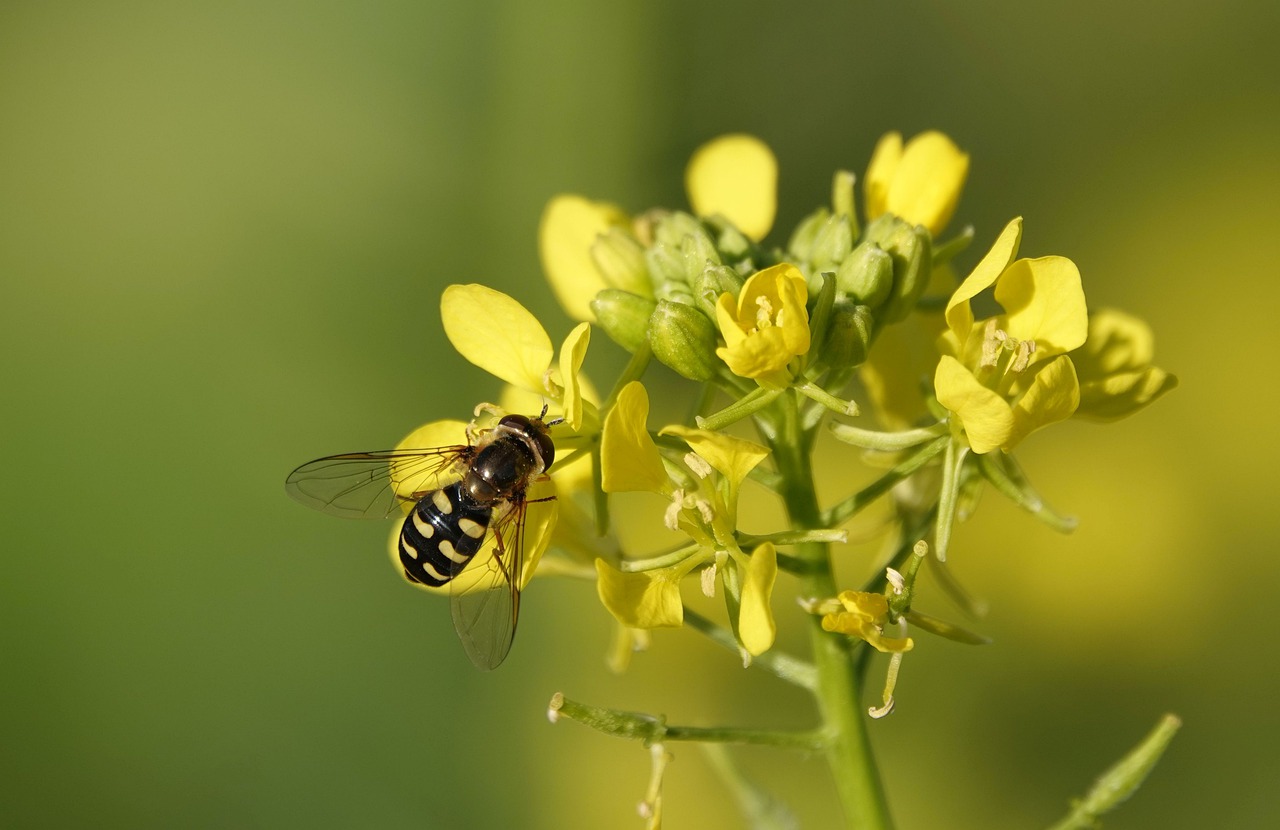
The cruciferous family includes many popular vegetable plants: all types of cabbage, radishes, rocket, kohlrabi and daikon. Particular attention must be paid here to a cultivation break between related species, otherwise cabbage hernia will be promoted! Repeated cultivation of crucifers also promotes soil fatigue, as the soil is depleted on one side. Nevertheless, there are some interesting green manure plants among the Brassicaceae:
| Plants | Sowing | Roots | Hardiness | Other |
|---|---|---|---|---|
| Raphanus sativus var. oleiformis | April - September | up to 1.5 m/1.6 yd deep | not hardy | lush foliage |
| Sinapis alba | August - September | up to 1.2 m/1.3 yd deep | not hardy | good bee host and host plant for moths |
| Brassica napus subsp. napus | March - Oktober | taproot up to 2 m/2.2 yd deep | hardy | Good soil protection in winter |

Check out Our Plant Library
In our library, you can find information on individual green manures, including growing seasons, planting tips, and harvesting tips. You can also find good and bad neighbors to help you plan a mixed crop.
Check out Our Plant LibraryOther Plants for Green Manure
Other plant families also have individual representatives that are often used as green manure. As they do not belong to the common plant families in the vegetable garden, they are easier to integrate into varied succession cropping.
| Plant | Family | Sowing | Root depth | Hardiness |
|---|---|---|---|---|
| Phacelia tanacetifolia | Ranunculaceae (Boraginaceae) | April - September | up to 0.7 m/0.8 yd deep | not hard |
| Buckwheat (Fagopyrum esculentum) | Knotweed family (Polygonaceae) | April - August | up to 0.7 m/0.8 yd deep | not hardy |
| Lamb's lettunce (Valerianella locusta) | Honeysuckle family (Caprifoliaceae) | March - April/ August bis Oktober | up to 0.7 m/0.8 yd deep | hardy |
| Flax (Linum usitatissimum) | Flax family (Linaceae) | April - July | up to 1 m/1.1 yd deep | not hardy |
| Wild mallow (Malva sylvestris) | Mallow family (Malvaceae) | March - August | up to 2 m/2.2 yd deep | hardy |
| Winter Rye (Secale cereale) | Sweet grasses (Poaceae) | September - November | up to 1.2 m/1.3 yd deep | hardy |
Mixtures of different green manure plants combine the properties of different plant species and can therefore have several effects at the same time. However, if you use your beds intensively and only have limited space to rotate the plant families, you should opt for pure species - this makes it easier to plan. When creating your own mixtures, make sure that the flowering times of the plants are consistent. Mixtures of a sweet grass and a legume are usually used, e.g. Wick rye or clover-grass. As sweet grasses are not very common in vegetable gardens, they do not pose a problem for crop rotation.
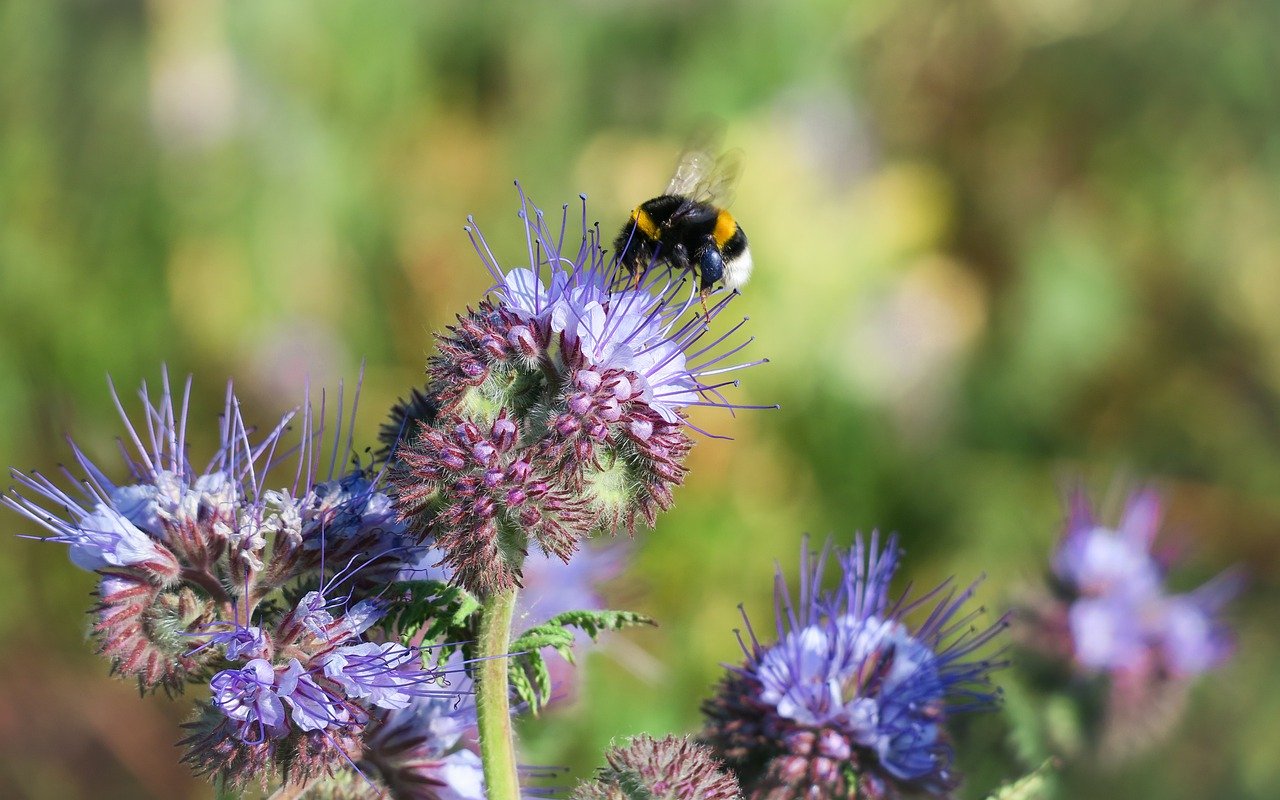
Sowing Green Manure: Spring to Fall
Depending on the type of plant, green manure is sown from March to October. To ensure that the seeds emerge evenly, you should prepare the soil for sowing. Remove the coarsest weeds with a hoe and loosen the surface slightly with a digging fork. Avoid digging, as this disturbs the sensitive soil structure! The green manure is sown either by hand in wide cubes or with a spreader. To ensure that the seeds have a good connection to the soil, you should then work the seeds shallowly into the soil with a wide rake.
Depending on the time of year and dryness, the sowing must be watered so that the seeds germinate reliably and emerge at the same time. Use a sprinkler attachment for the watering can or water with a sprinkler. When sowing legumes, it is also worth working some seaweed lime or rock flour shallowly into the soil. This improves the environment for the nitrogen-fixing nodule bacteria that live in symbiosis with the plants.
Green Manure in the Fall
As soon as the last vegetable plants have been harvested in late summer, you can sow green manure as a catch crop. It covers the soil over the winter and protects it from erosion and weed growth. Various hardy and non-hardy plants are suitable for sowing in late summer or fall (see above).
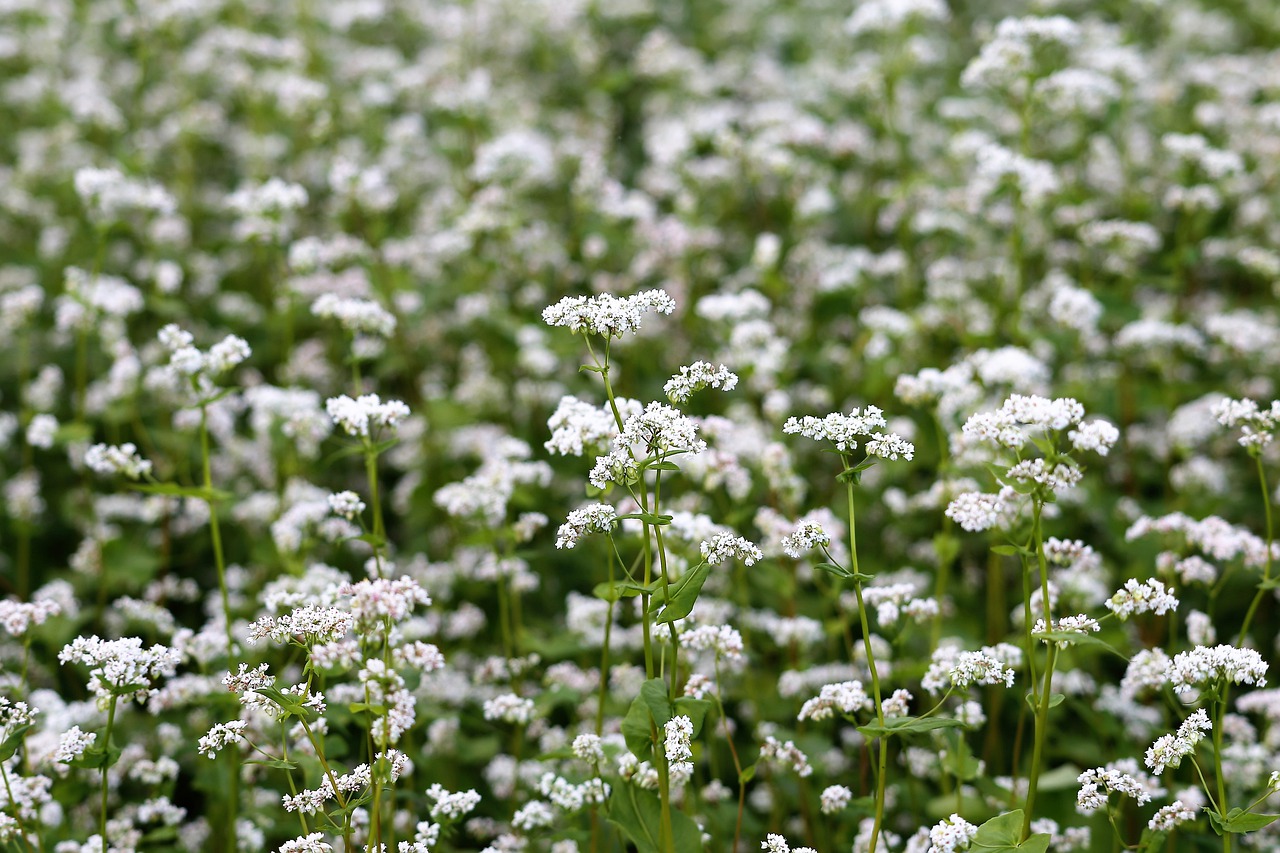
Buckwheat, for example, can be sown until late summer and serves as a ground cover in winter. It is not hardy, but the plant material provides protection for the soil even after freezing. As a member of the knotweed family, buckwheat is only related to rhubarb and is therefore relatively crop rotation neutral. It germinates and grows very quickly and can therefore quickly cover unprotected soil.
Cutting and Incorporating Green Manure
Non-hardy species do not need to be mowed when sown late. Simply leave them on the beds over the winter, they will freeze off on their own at low temperatures. Only in spring can the remains be cut as required and worked into the soil. The bed should then rest for around 3 - 4 weeks before sowing or planting new seeds.
Hardy green manure plants such as winter rye or winter rape are usually left until spring. If you want to use the bed early in the year, you should cut them in late winter and work them in as required. The best way to cut tall plants is with a scythe, brush cutter or lawn mower. A lawn mower shreds the plant debris best and thus ensures faster decomposition.
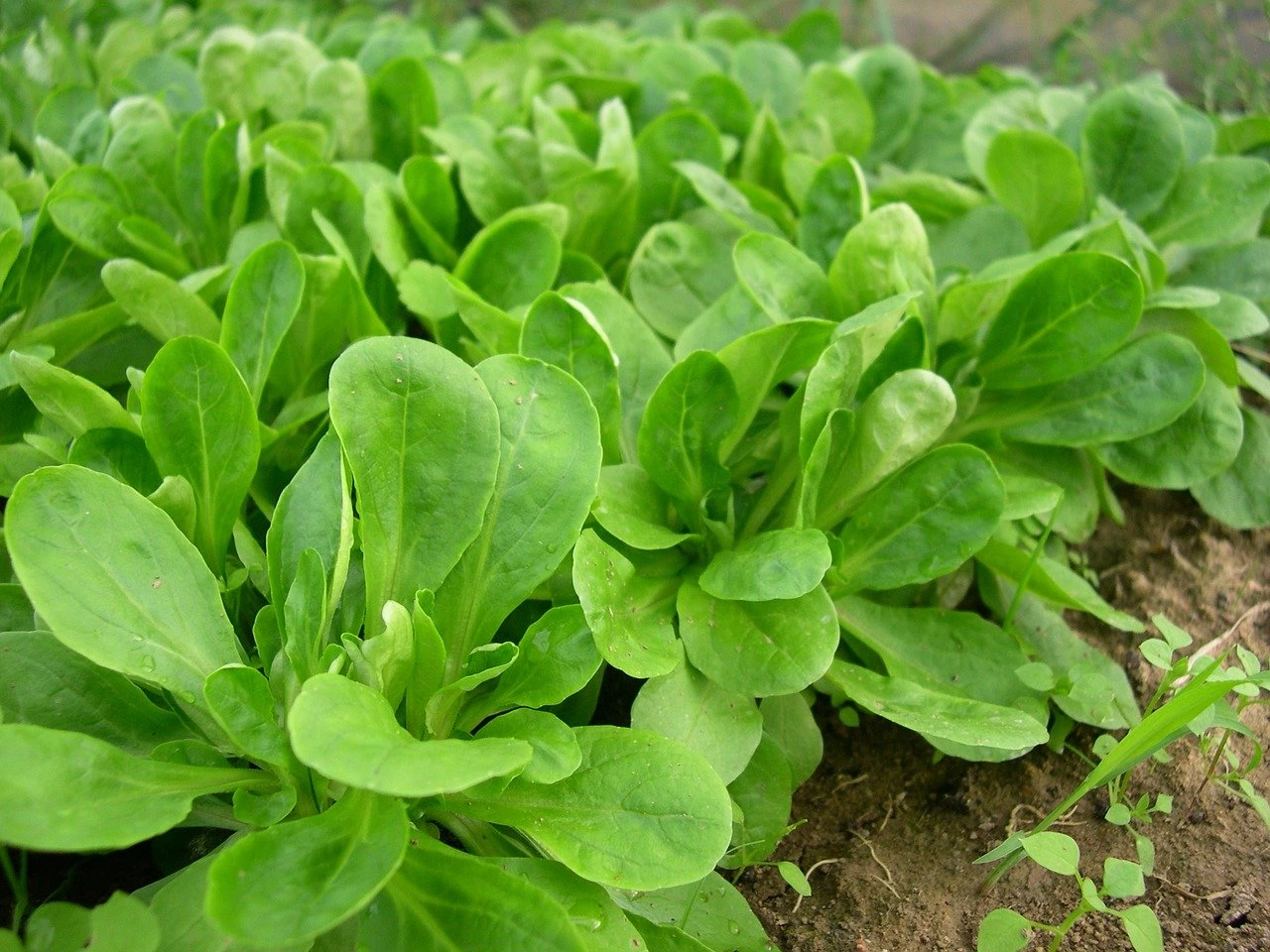
When Is the Best Time to Cut Green Manure?
The green manure is mowed before the seeds ripen and left as Mulch. Depending on the plant species, cutting takes place after a vegetation period of five to eight weeks. Only overwintering species can be left longer, as they develop more slowly and therefore only form seeds later. A little skill is required here, because if you cut the green manure too early, the optimum effect will not be achieved. So keep a close eye on the plants and cut them at the latest when the flowers enter the fruiting phase. The plant material then covers the soil as mulch and rots over time.
Incorporate Green Manure
If you want to work the leftovers into the soil, they should first dry well on the soil surface. Otherwise, species with large leaf masses in particular may rot. Rotting occurs if you work the organic material in too deeply. This can lead to a lack of oxygen and the material rotting instead of composting. If there is no more time for composting on the area, you can work the plant residues into the soil. However, it is better to leave the organic material on the garden soil so that it composts on its own.
Tall-growing plants with woody stems (e.g. sunflowers, mallow) should not be worked into the soil but composted separately. Cress or lamb's lettuce, on the other hand, can be sown before the bed is used; they grow and decompose very quickly. Cut the plants at a height of 5 cm/2 in and leave them as mulch for the time being.
Green Manure as a Mixed Crop
Green manure does not have to grow separately from your vegetable plants. Some plants can be integrated into a mixed culture and support the growth of their companion plants.
- High-yielding plants such as cabbage or pumpkin, for example, benefit from a mixed culture with legumes, as these have a nitrogen-enriching effect.
- If you have a lot of fruit bushes and trees in your garden, you can use lush flowering species that attract pollinators. You can easily increase the diversity of insects in your garden by undersowing with phacelia, marigolds or buckwheat.
- If you have problems with soil fatigue caused by nematodes, you can sow marigolds and marigolds as antagonists. These two composite plants can be particularly helpful as companions to susceptible plants such as roses, potatoes and tomatoes.
Your Planting Plan With Manure Plants: Ideas and Examples
We have prepared some sample planting plans with green manure plants for you. You can either use a four-crop rotation - like a farmer's garden. In this case, a bed receives a green manure crop every four years. Alternatively, you can incorporate green manure into a mixed crop. Calendula, marigold, or lamb's lettuce work well in a mixed crop and help maintain soil fertility.
We hope that we have been able to give you a good overview of the advantages of founding and its representatives. If you have any questions or comments, please write to us at magazin@fryd.app. To never miss an article again, follow us on Instagram or Facebook. You can also subscribe directly to our newsletter.
Do you want to receive helpful gardening tips all year round and plan your own beds optimally? Then register here or download the Fryd app for Android or iOS download.
Fryd - your digital bed planner
Cover picture by Couleur on pixabay
Annabell
Current Topics in the Community

#red , #tuesday
Show 1 answer
Liked 2 times
#testpostcount

Dec 2025
Popular Articles

Companion Plants for Carrots: What (Not) to Plant With Carrots

Companion Plants for Celery : What (Not) to Plant With Celery?

Strawberry Types: List of Best Strawberry Varieties

Companion Planting With Strawberries: Companion Plants and Planting Plan

Basil Varieties & Types at a Glance

What to Plant With Cabbage: Good and Bad Companion Plants

Fertilizing Strawberries: Home Remedies & Natural Fertilizers at a Glance

Growing Sweet Potatoes: Tips on Cultivation & Companion Plants

Companion Plants for Kitchen Herbs: Chives, Parsley & Co

What Herbs Can Be Planted Together?
FAQ
Green manuring involves sowing plants that have a positive effect on soil fertility and structure. These plants are not harvested and are left on the ground as mulch. Green manure thus serves as "fertilization" for the soil, as it provides food for soil life.
How does green manure improve the soil?
It improves soil structure, promotes humus formation, improves water retention and suppresses weeds. Legumes can increase the nitrogen content of the soil through their relationship with nitrogen-fixing bacteria.
Which plants are suitable as green manure?
Legumes such as clover and vetches are excellent for nitrogen enrichment. Other plants, such as phacelia and mustard, improve soil structure and health and attract beneficial insects.
When should foundation plants be sown and incorporated?
Sowing times vary from spring to fall depending on the plant species. Incorporation into the soil takes place after flowering but before the plants set seed to maximize the benefits for soil structure and fertility.
